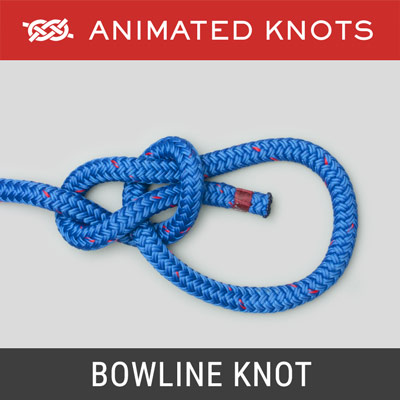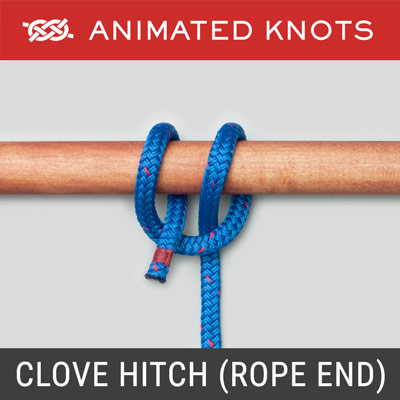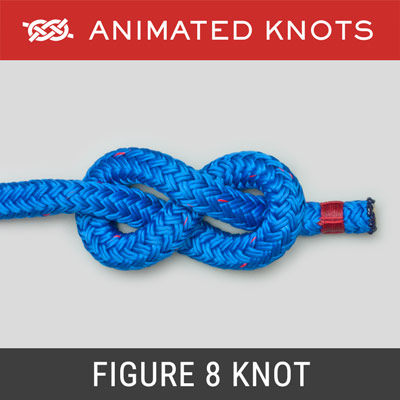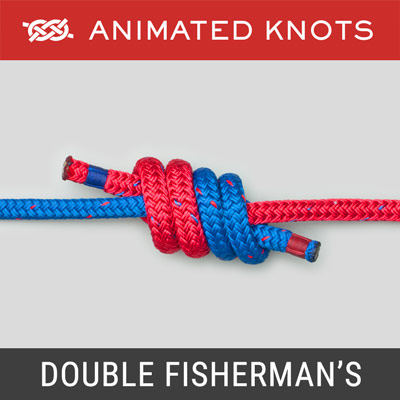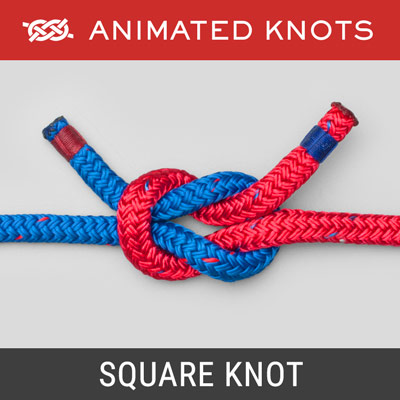Attaches rope to cleat. Often used for Dock Lines.
Cleat Hitch (Dock Line)
Attaches rope to cleat. Often used for Dock Lines.
 |  |
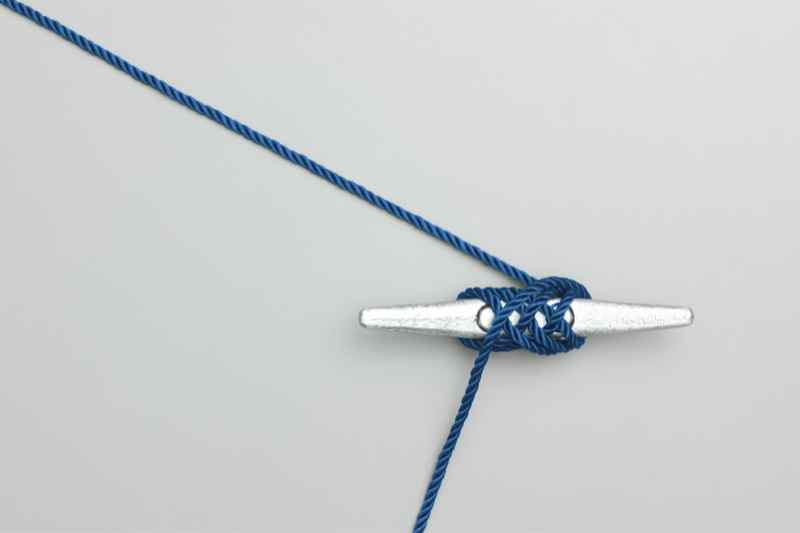
 |  |  |  |  |
To Step use Arrow Keys (
Uses: The Cleat Hitch secures a rope to a cleat. It is deceptively simple and an unwary skipper who invites visitors to cleat a mooring line may be astonished and dismayed by the unsatisfactory results. See also using a cleat hitch for Securing a Halyard.
First Horn: Initially the rope must be led round the most distant horn of the cleat followed by a turn in the same direction round the other horn. Starting round the wrong horn increases the risk of a Cleat Hitch jamming.
No Round Turn: After passing the rope around two horns of the cleat, always cross over and make figure 8 turns afterwards. This is because the Figure 8 Turns lift the rope up against the horns and out of the way of the first turn. Jamming is a risk if the initial turn continues around and under the first horn a second time (making a complete round turn). Now if a towline briefly becomes slack, the initial turn can separate away from the cleat and then clamp down on top of the second turn making it impossible to release the rope while there is load on the towline.
Name: Some contributor’s protest that the name “Hitch” is wrongly applied because there is no final Half Hitch. However, Cleat Hitch describes the purpose well – the rope is hitched to a cleat – and there are other “Hitches” that are sometimes used without a final Half Hitch, e.g., Tensionless Hitch and The Lighterman’s, or Tugboat, Hitch.
No Locking Hitch? Several skippers have written to emphasize various situations when a Locking Half Hitch must be avoided:
- Large Vessels: The uniform practice on large vessels is to never add a final Half Hitch.
- Towing: Never add a Half Hitch on either end of a towline. First, a towline should always be monitored. Second, the ability to quickly release either end is essential.
- Sheeting a Sail: Avoid a Half Hitch for the sheet controlling a sail – rapid release may be critically important in preventing a disaster, e.g., a capsize.
Use a Locking Hitch? In other situations a Cleat Hitch is commonly completed with a locking hitch, e.g., the dock lines for a yacht left in a harbor for long periods, small boat sail halyards, and flag halyards.
Number of Turns: In most of Ashley’s illustrations he shows astonishingly few turns. However, he was writing when tarred hemp was the rope of choice. Today’s ropes may be stronger, thinner, slippery, and more elastic (nylon rope stretches by more than 5% when loaded to 20% of its rated breaking strain). Some modern illustrations still show only a single crossover followed by a Half Hitch. An intermittent load on a nylon rope may transmit tension to the Half Hitch and make release awkward. I am indebted to Kevin Redden for the following practical advice: two crossovers is the bare minimum, and only for temporary use in sheltered conditions. In all other situations, always add more – certainly enough to handle any storm load.
History: “Belaying a rope” means securing it or making it fast. Before cleats were common, a rope used to be secured to a vertical pin in a wooden beam called, of course, a “Belaying Pin”. Ashley describes several variations including the use of a single hitch by itself (ABOK # 1594, page 284).
Acknowledgements: Several people have written to provide suggestions about the Cleat Hitch. In particular it is a pleasure to thank Kevin Redden who explained the risk of using a full round turn and provided a recommendation about the number of crossover turns.



